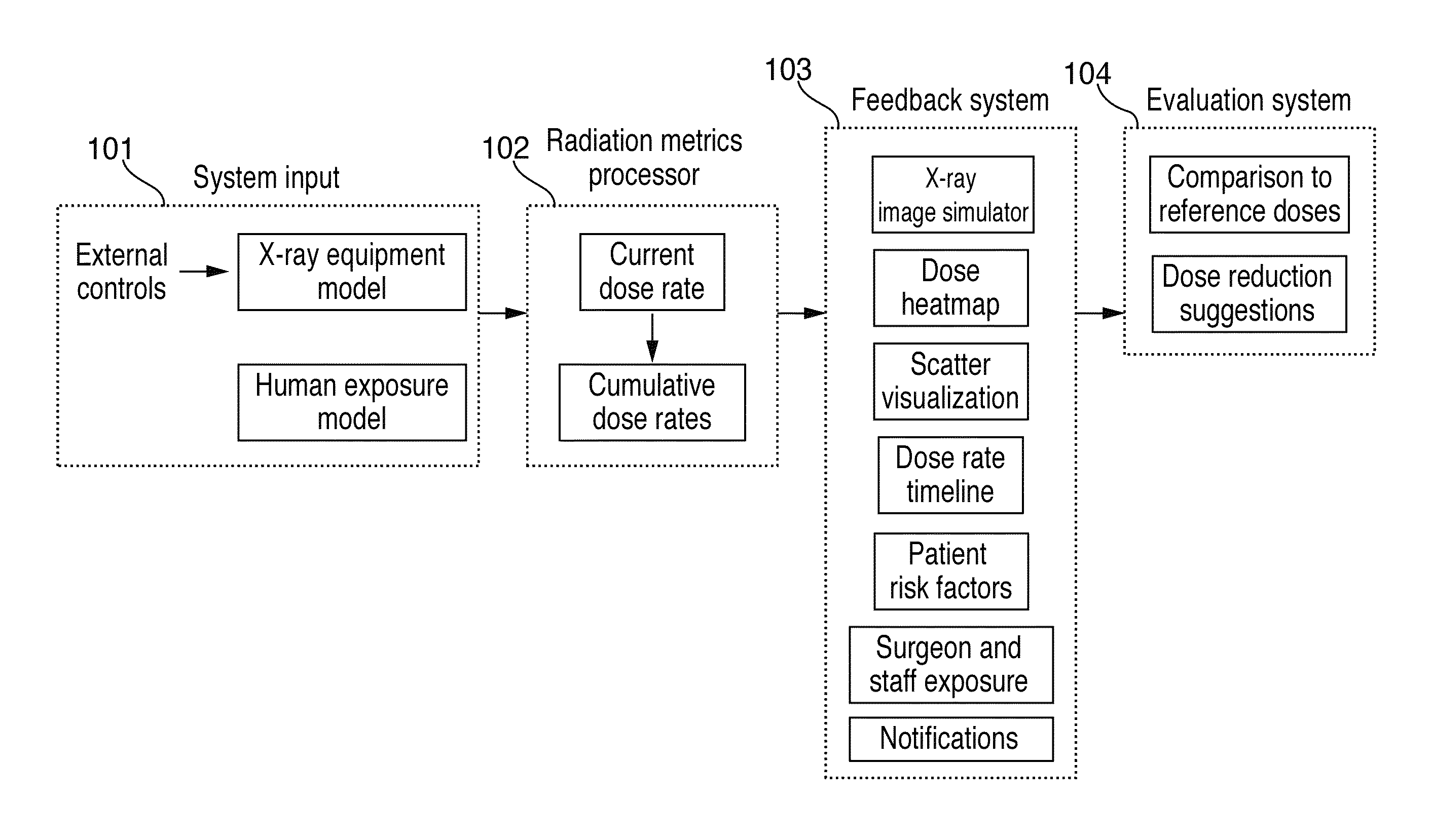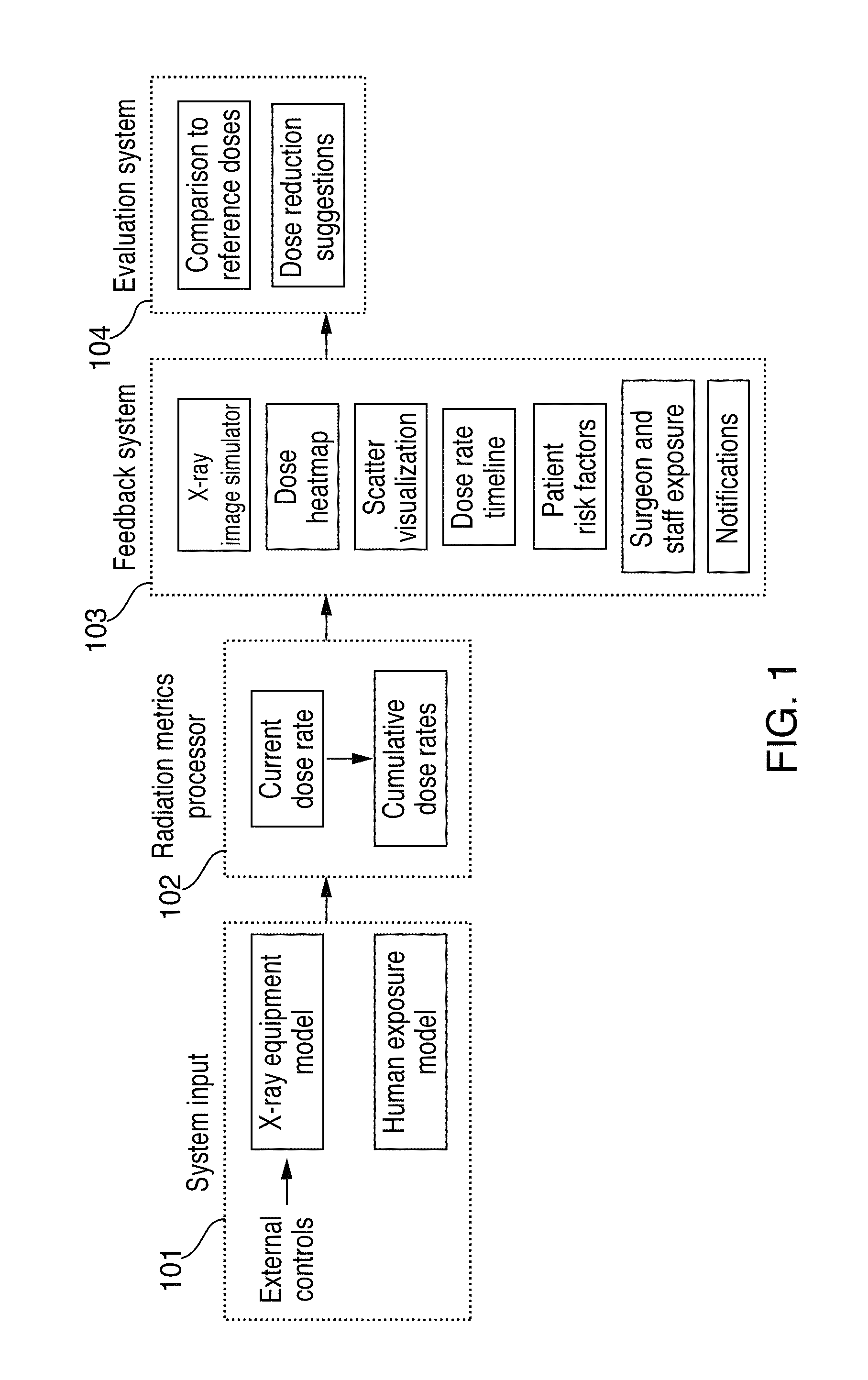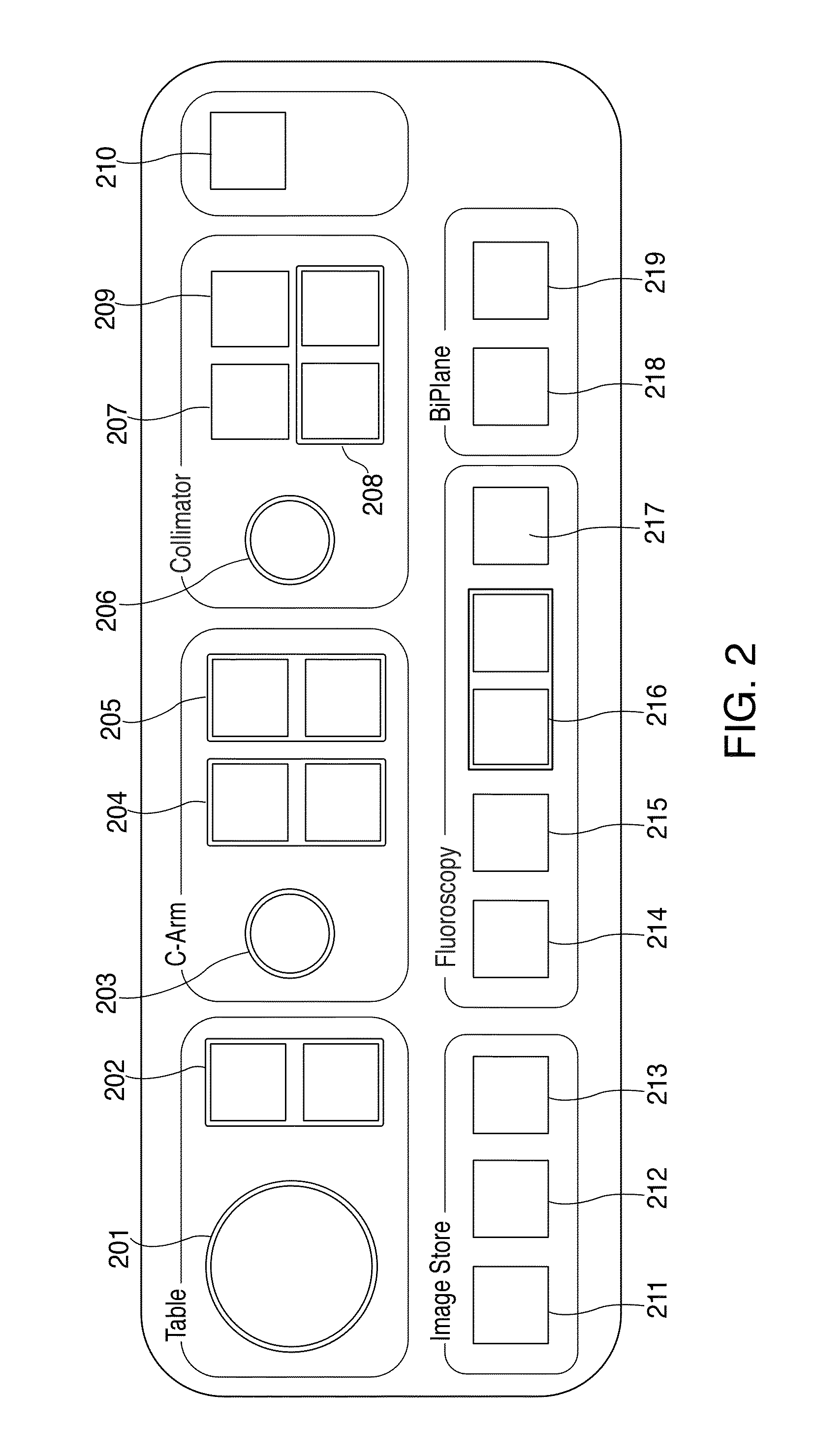Systems and methods for simulation-based radiation estimation and protection for medical procedures
a radiation estimation and simulation technology, applied in the field of simulation, can solve the problems of microscopic damage to living tissue, serious side effects, and tissue damage type that is a risk to both the patient and the medical team
- Summary
- Abstract
- Description
- Claims
- Application Information
AI Technical Summary
Benefits of technology
Problems solved by technology
Method used
Image
Examples
Embodiment Construction
[0036]The invention described herein provides systems and methods for the realistic simulation of x-ray guided medical procedures in a radiation-free environment. The system and methods may be used to train and certify professionals to reduce medical and occupational radiation exposure, and educate operators of x-ray systems how to use x-ray equipment in the least harmful way. Embodiments of the invention may also be used for therapeutic device design, development and testing.
[0037]FIG. 1 shows a diagram of several components of the radiation protection simulation system according to one embodiment of the invention. These components enable a user to simulate an x-ray guided procedure, and visualize the changes to radiation exposure and image quality as the user adjusts operating settings during the procedure. The components of the radiation protection simulation system may include a system input 101, radiation metrics processor 102, feedback system 103, and evaluation system 104. Us...
PUM
| Property | Measurement | Unit |
|---|---|---|
| time | aaaaa | aaaaa |
| thickness | aaaaa | aaaaa |
| thickness | aaaaa | aaaaa |
Abstract
Description
Claims
Application Information
 Login to View More
Login to View More - R&D
- Intellectual Property
- Life Sciences
- Materials
- Tech Scout
- Unparalleled Data Quality
- Higher Quality Content
- 60% Fewer Hallucinations
Browse by: Latest US Patents, China's latest patents, Technical Efficacy Thesaurus, Application Domain, Technology Topic, Popular Technical Reports.
© 2025 PatSnap. All rights reserved.Legal|Privacy policy|Modern Slavery Act Transparency Statement|Sitemap|About US| Contact US: help@patsnap.com



